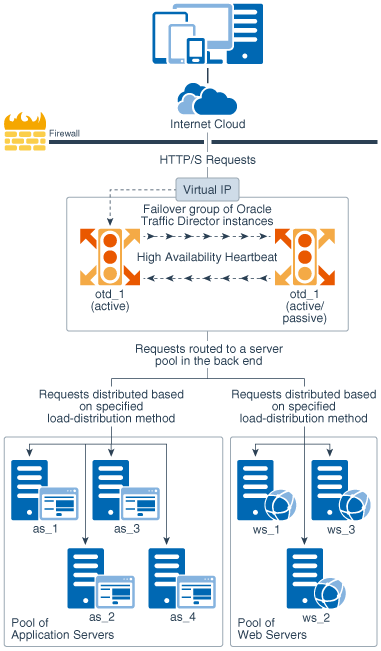2 Typical Deployment Topology
The topology that you create for Oracle Traffic Director varies depending on your business requirements such as the number of back-end applications for which you want to use Oracle Traffic Director to balance requests, IT requirements such as security, and the features of Oracle Traffic Director that you want to use.
In the simplest implementation, you can have a single Oracle Traffic Director instance running on a dedicated compute node distributing client requests to a pool of servers in the back end.
To ensure that the node on which an Oracle Traffic Director instance runs does not become the single point of failure in the topology, you can have Oracle Traffic Director instances running on different nodes forming a failover group for high availability. The failover group is represented by virtual IP (VIP) addresses. Both the hosts in a failover group must run the same operating system version, use identical patches and service packs, and run Oracle Traffic Director instances of the same configuration.
The topology consists of two Oracle Traffic Director instances—otd_1 and otd_2- forming a failover pair and providing a single virtual IP address for client requests. Based on the mode of failover configured, the primary node will determine how and where to forward the request. For information on failover modes, see Failover configuration modes.
Note that the topology shows only two server pools in the back end, but you can configure Oracle Traffic Director to route requests to servers in multiple server pools.
